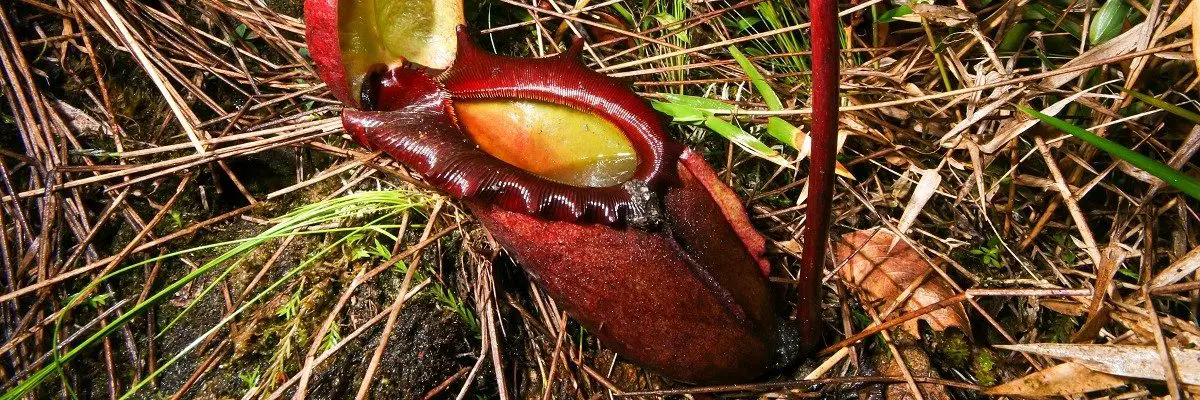Have you ever wondered about the rarest carnivorous plant on our planet? These intriguing plants, with their unique characteristics, are surprisingly scarce and highly coveted. They can survive in the most severe conditions thanks to their unique traits. In this article, we’ll delve into their distribution and habitat, botanical features, and conservation status, giving you a deeper understanding of what makes them so rare. If you’re feeling adventurous, we’ll also provide some tips on cultivating your own!
Overview
The rarest carnivorous plant in the world, Nepenthes attenboroughii, also known as Attenborough’s pitcher plant, is a fascinating testament to nature’s complexity. This plant is a unique species that has adapted to capture and digest animal prey for nutrition. These adaptations, including bell-shaped pitchers and upright lids, make it stand out among other carnivorous plants. Conservation efforts are being undertaken worldwide to ensure the survival of these unique plants as their native habitats face destruction from human activities. Research into these plants also reveals new behaviors and adaptations that continue to surprise scientists and laypeople alike. By learning more about these remarkable organisms, we can gain a greater appreciation for the diversity of life on Earth and understand more fully our place within it all.
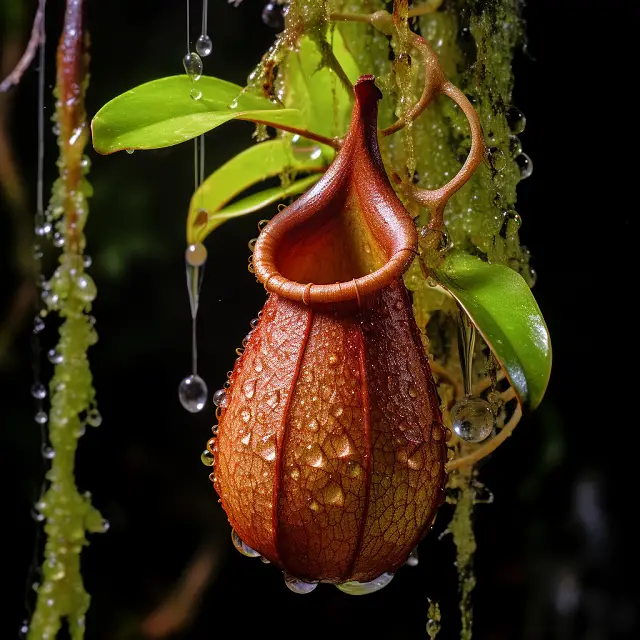
Distribution and Habitat
The rarest carnivorous plant in the world, Nepenthes attenboroughii, is found in very limited and isolated habitats. This species is only found on the summit of Mount Victoria, an ultramafic mountain in central Palawan, the Philippines. The global population of these plants is critically endangered due to their extremely limited distribution, the specific conditions they require to grow, and the threats posed by human activity.
The habitats they inhabit are typically montane areas with rocky, ultramafic soil. They have adapted to their environment by forming a unique relationship with the insects that live within their pitchers. These insects help protect the plants from predators while providing nutrients from their waste products in exchange for shelter and food sources.
Unfortunately, human activities such as logging, farming, urban expansion, and mining all threaten these delicate ecosystems and pose a direct threat to Nepenthes attenboroughii populations everywhere. We must do what we can now to protect these magnificent creatures before it’s too late!
| Global Population | Endangered Habitats |
|---|---|
| Critically endangered | Montane areas with rocky, ultramafic soil |
| Adapted symbiotic relationships with insects for protection & nutrients | Threatened by human activities (logging, mining etc.) |
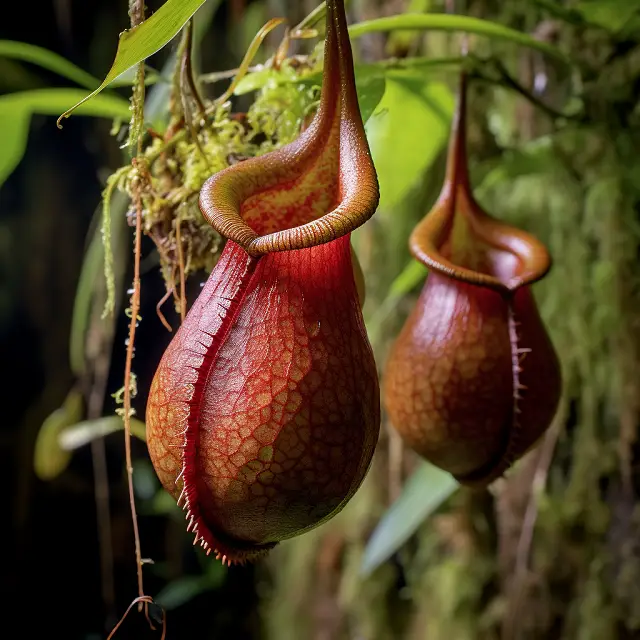
Botanical Characteristics
Nepenthes attenboroughii, or Attenborough’s pitcher plant, is a unique carnivorous plant that stands out amongst its peers with its distinct botanical characteristics. This species of carnivorous plant is known for having unusual adaptations and features that allow it to survive in a variety of environments. It has evolved to be able to feed on insects with specialized feeding mechanisms and an evolutionary trait that absorbs moisture from the air. Additionally, it possesses an array of botanical diversity within its genus, including large and distinctive bell-shaped lower and upper pitchers and narrow, upright lids.
This peculiar plant has adapted over time to suit its environment, which consists largely of rocky, ultramafic soils and high altitudes. Its survival strategies include trapping insects with its bell-shaped pitchers and photosynthesis capabilities that allow it to absorb moisture from the air when water sources are scarce during dry spells or droughts. The plant also produces scents that attract certain flying insects into their traps.
Due to these unique adaptive traits, Nepenthes attenboroughii has earned itself a place amongst some of the rarest plants in existence today and continues to fascinate scientists and enthusiasts alike with its fascinating evolutionary story and diverse range of habitats across the landscape of Mount Victoria in the Philippines.
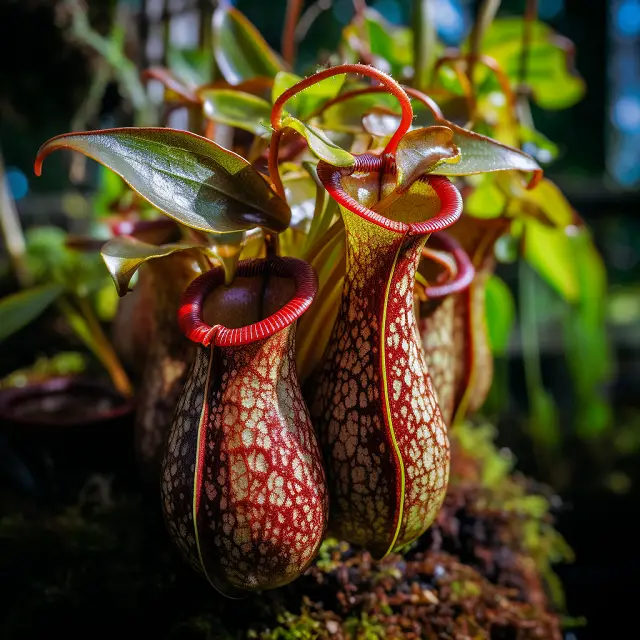
Attraction and Adaptation
You’ll be amazed by the incredible adaptations of Nepenthes attenboroughii, which allows it to attract insects from far and wide with its exquisite scents and dazzling colors. This incredibly rare carnivorous plant employs strategies to capture prey, utilizing a combination of digestive enzymes and camouflaging techniques. It’s also incredibly efficient because it manages to survive in nutrient-deficient environments. Its specialized scent mimics that of nectar, luring unsuspecting insects toward the bell-shaped pitchers on the leaves. This sticky substance traps the insect and keeps them within reach for digestion.
The bright colors of Nepenthes attenboroughii also draw in pollinators like bees, wasps, and butterflies – both day and night! These colorful pitchers are special because they act as a beacon for these creatures while simultaneously being perfectly camouflaged against predators due to their vibrant hue. Furthermore, when these animals land on the plant’s leaves, they become trapped by powerful digestive enzymes contained in their pitchers.
By employing a combination of attractive visuals paired with potent digestive enzymes, Nepenthes attenboroughii is able to trap unsuspecting victims from far distances – allowing this rare carnivorous plant to survive in nutrient-deficient conditions across many different landscapes without any external assistance!
Average Lifespan
The average lifespan of a rare carnivorous plant, such as Nepenthes attenboroughii, is influenced by a variety of factors, both environmental and physiological.
Light requirements are crucial for these plants as they rely on photosynthesis for their energy needs. The amount of light they receive can significantly impact their growth and overall health. Too little light can stunt growth and reduce the plant’s ability to capture and digest prey, while too much light can cause leaf burn and other damage.
Photosynthesis rates are another key factor. Carnivorous plants often live in nutrient-poor soils and rely on capturing and digesting insects to supplement their nutrient intake. The rate at which they can photosynthesize impacts their growth and overall health.
Soil nutrients are also important. While carnivorous plants have adapted to live in nutrient-poor soils, they still require some nutrients from the soil, particularly minerals that they cannot obtain from their prey.
Climate needs are another major factor. These plants are often adapted to very specific climates and can struggle if these conditions are unmet. For example, some require high humidity, while others need a period of winter dormancy.
Fertilization needs can also impact the lifespan of a carnivorous plant. While these plants generally do not require as much fertilization as other plants due to their ability to capture and digest insects, some fertilization can still be beneficial. However, over-fertilization can be harmful and even fatal to these plants.
Proper care is essential for these plants to thrive. This includes providing the right amount of light, maintaining the appropriate climate, and ensuring the soil has the necessary nutrients. With the right care, these plants can live healthy lives, often for several decades. However, it’s important to note that each carnivorous plant species has its own specific care requirements, and what works for one species may not work for another.
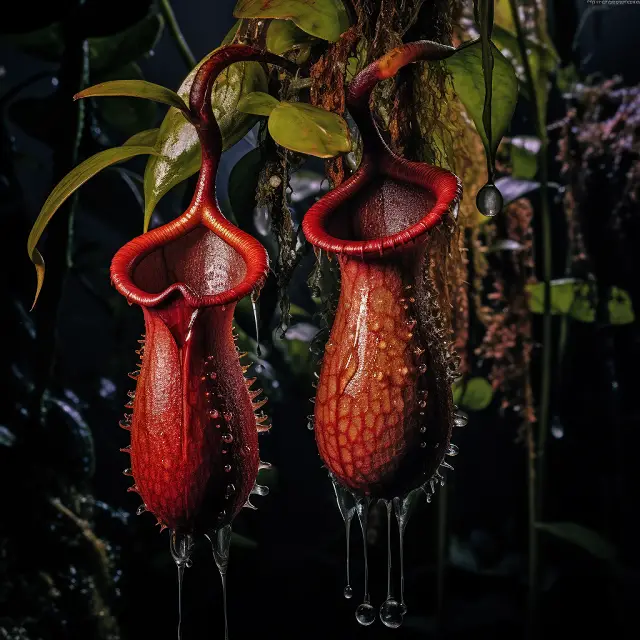
Conservation Status
Despite their incredible adaptations, Nepenthes attenboroughii’s conservation status is currently in a precarious position due to loss of habitat and over-collecting. As an endangered species, it is listed as ‘Critically Endangered’ on the IUCN Red List. The main threat to this plant lies in its limited natural range and its slow growth rate; this means that any destruction of its already fragile habitat can lead to rapid population decline.
In recent years, there have been several conservation efforts made to protect the remaining populations of Nepenthes attenboroughii. These include protection from collectors, limiting access to sites where they are found, maintaining suitable habitats and managing surrounding vegetation. Additionally, careful reintroduction strategies have been put into place in some areas to help boost existing populations or establish new ones.
Despite these efforts, Nepenthes attenboroughii remains vulnerable due to their narrow range and slow response times when exposed to environmental change. To increase their chances of survival, continued monitoring of existing populations is essential for early detection of threats like climate change or changes in land use. Conservation strategies should also aim at increasing public awareness about the importance of preserving these delicate carnivorous plants so that people understand why it is important not only for preservation but also for science research purposes.
The ultimate goal must be focused on preserving wild populations by protecting their habitats while encouraging reintroductions wherever possible; only then will we be able to ensure that future generations get the chance to admire these miraculous plants in all their glory!
Fascinating Facts
The unique Nepenthes attenboroughii are so special they’ve been named in honor of the famed broadcaster and naturalist, Sir David Attenborough, who holds a particular fondness for this genus. This species stands out due to its large, identifiable bell-like lower and upper pitchers, along with a slender, upright lid. The largest pitcher of N. attenboroughii on record boasts a volume exceeding 1.5 litres, with occasional specimens potentially reaching up to 2 litres. It’s also noteworthy that this plant harbors a significant population of mosquito larvae within its pitchers. In 2010, the International Institute for Species Exploration at Arizona State University recognized N. attenboroughii as one of the “top 10 new species described in 2009”. Further, in 2012, the species made it to the list of the world’s 100 most threatened species, a compilation by the IUCN Species Survival Commission in partnership with the Zoological Society of London.
FAQ
| FAQ | Answer |
|---|---|
| What is the rarest carnivorous plant in the world? | The rarest carnivorous plant in the world is Nepenthes attenboroughii, also known as Attenborough’s pitcher plant. |
| Where is Nepenthes attenboroughii found? | Nepenthes attenboroughii is found only on the summit of Mount Victoria, an ultramafic mountain in central Palawan, the Philippines. |
| What is the conservation status of Nepenthes attenboroughii? | The conservation status of Nepenthes attenboroughii is classified as ‘Critically Endangered’ according to the IUCN Red List. This is due to its highly restricted habitat and the danger it faces from human activities. |
| Why is Nepenthes attenboroughii named after Sir David Attenborough? | Nepenthes attenboroughii is named after the celebrated broadcaster and naturalist Sir David Attenborough, who is a keen enthusiast of the genus. |
References:
https://www.britannica.com/plant/giant-pitcher-plant
https://www.discovermagazine.com/planet-earth/your-weekly-attenborough-nepenthes-attenboroughii

